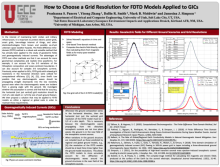Modeling Criteria for applying the FDTD methods to GICs
Prashanna
Sharma Paneru
Department of Electrical and Computer Engineering, University of Utah, Salt Lake City, UT, USA.
Poster
In the interest of maintaining both civilian and military infrastructure, it is important to protect electric power grids, smart grids, low-voltage internet of things, and other electrotechnologies from known and possibly as-of-yet unknown space weather hazards. The finite-difference time-domain (FDTD) method is a robust and versatile method that has already been applied to the study of geoelectric fields and geomagnetically induced currents. The advantages of FDTD over other methods are that it can account for more geometrical complexities and realistic time waveforms. For example, it can account for the 3-D variations of the lithosphere composition and ocean-continent boundaries. It can also account for complex 3-D ionospheric currents. Previously, when applied to GICs, FDTD grids with relaxed grid resolutions in the horizontal direction were utilized for computational efficiency, since Snell’s Law predicts that any electromagnetic waves should be propagating straight downwards into the low resistivity ground even when the electromagnetic waves are incident from a grazing angle with the ground. We investigate whether this assumption is correct and find that for accuracy, the horizontal (not just vertical) grid resolution should be <1/3 of a skin depth or <1/3 the size of each ground feature. We then propose a solution that may be applied to FDTD models on either a regional or global scale in order to maintain these requirements.

Poster PDF
Poster category
Space Weather Policy and General Space Weather Contributions
Meeting homepage